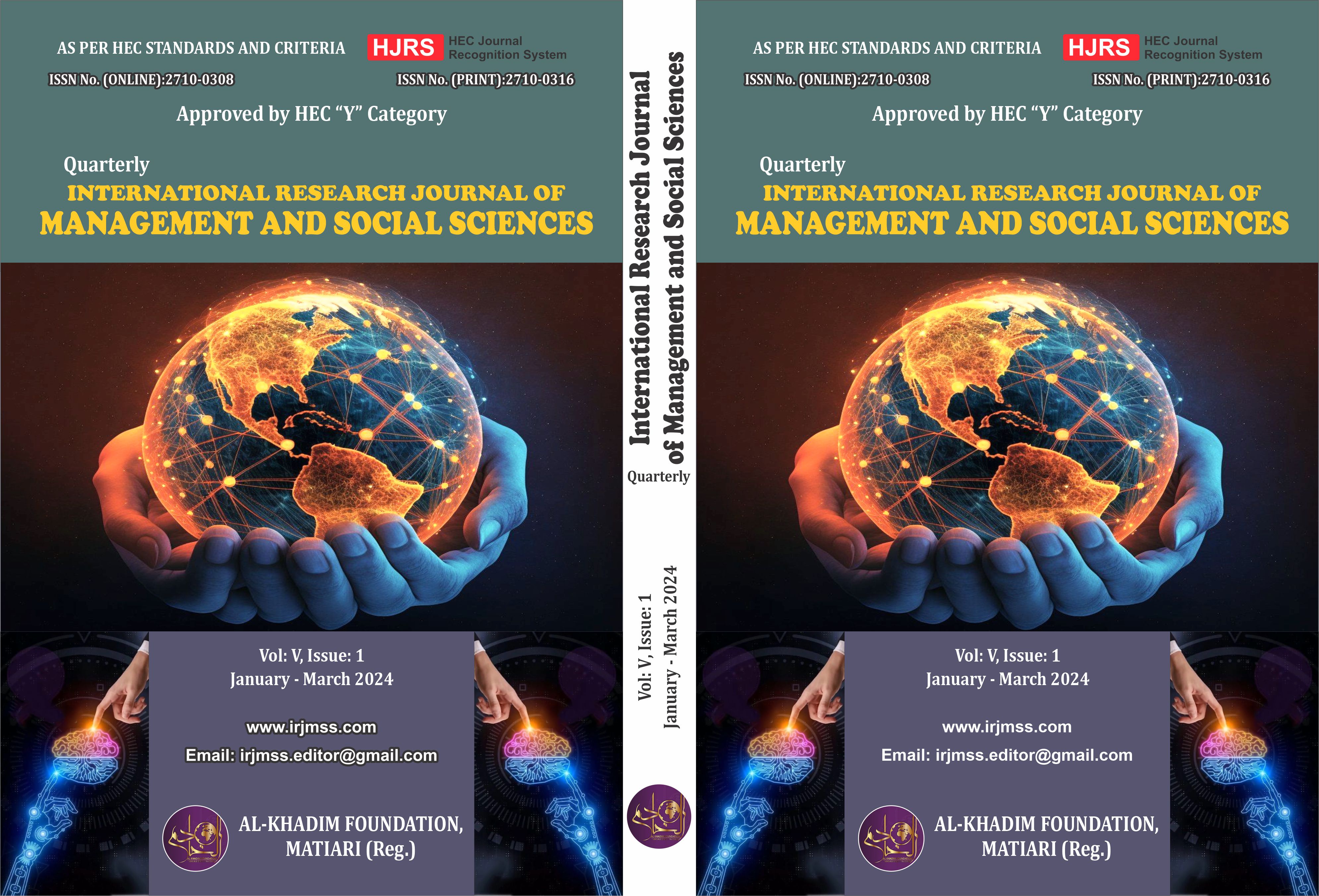Gender Wise Comparison of University Faculty Regarding Secondar Traumatic Stress, Its Causes & Effects on Teaching Approach
Keywords:
Factors, Secondary Traumatic Stress, Teaching Approach, University TeachersAbstract
Secondary Traumatic Stress (STS) is an emotional pressure that occurs during the traumatic experience of another individual. Secondary traumatic stress is one of the factors that affect teaching approaches. The study used a descriptive research approach in order to investigate the phenomena. The population was all university teachers working in government and private sector universities functioning in capital of Pakistan i.e. (Islamabad). A sample of 200 university teachers from 04 public and 04 private universities will be selected using a simple random selection method for data collection. For data collection, the researcher adapted the instrument developed by Bride et al., (2004) in the form of closed-ended questionnaire. Before using the specified instrument, its validity and reliability was checked through obtaining experts’ opinion and pilot study will be conducted. The researcher collected the data personally and online method, and same were analyzed with SPSS using both descriptive and inferential statistics. Results revealed that the majority of university teachers occasionally experience secondary traumatic stress during the teaching-learning process. The study found an insignificant difference among teachers, based on their universities, regarding students’ trauma, its causes, and its effects on teaching approaches. However, this investigation identified an insignificant difference among teachers based on gender concerning students’ trauma, but significant differences in the causes of trauma and its effects on teaching approaches, favoring female teachers.
References
Bell, H., Limberg, D., & Robinson, E. (2013). Recognizing trauma in the classroom: A practical guide for educators. Childhood Education, 139-145.
Bride, B.E., Robinson, M.R., Yegidis, B., & Figley, C.R. (2004). Development and validation of the Secondary Traumatic Stress Scale. Research on Social Work Practice, 14, 27-35.
Brown, L. (2016). The impact of reflective supervision on early childhood educators of at-risk children: Fostering compassion satisfaction and reducing burnout (Publication No. 10193236). [Doctoral dissertation, University of California, Santa Barbara]. ProQuest LLC
Bücker, J., Kapczinski, F., Post, R., Ceresér, K. M., Szobot, C., Yatham, L. N., Kapczinski, N. S., & Kauer-Sant'Anna, M. (2012). Cognitive impairment in school-aged children with early trauma. Comprehensive Psychiatry, 53(6), 758– 764. https://doi.org/10.1016/j.comppsych.2011.12.006.
Berger, R., Abu-Raiya, H., & Benatov, J. (2016). Reducing primary and secondary traumatic stress symptoms among educators by training them to deliver a resiliency program (ERASE-Stress) following the Christchurch earthquake in New Zealand. American Journal of Orthopsychiatry, 86(2), 236.
Delaney-Black, V., Covington, C., Ondersma, S. J., Nordstrom-Klee, B., Templin, T., Ager, J., & Sokol, R. J. (2002). Violence exposure, trauma, and IQ and/or reading deficits among urban children. Archives of Pediatrics & adolescent Medicine, 156(3), 280-285.
Goulston, M. (2011). Post-Traumatic Stress Disorder for Dummies. John Wiley & Sons.
Kelty, S., Green, N., Ribaux, O., Roux, C., & Robertson, J. (2022). Assessment of Occupational Stress. In M. M Houck, H. Eldridge, S. Lewis, K. Lothridge, P. Reedy, & L. Wilson (Eds.), Encyclopedia of Forensic Sciences: Volume 1-4, Third Edition (Vol. 1-4, pp. 209-220). (Encyclopedia of Forensic Sciences, Third Edition). Elsevier. https://doi.org/10.1016/b978-0-12-823677-2.00017-9.
Meyer, S., & Carolina, L. (2019). Secondary traumatic stress. South Carolina Department of Social Services.
Pandya, S. P. (2024). Secondary school students, examination stress, and academic confidence: Understanding the effect of yoga lessons. International Journal of Stress Management. 31(4), 336–352. https://doi.org/10.1037/str0000323
Sloan, K., Vanderfluit, J., & Douglas, J. (2019). Not 'just my problem to handle': Emerging themes on secondary trauma and archivists. Journal of Contemporary Archival Studies, 6(20), 1-21.
Stevens, T., Barnard-Brak, L., Roberts, B., Acosta, R., & Wilburn, S. (2019). Aggression toward teachers, interaction with school shooting media, and secondary trauma: Lockdown drills as a moderator. Psychology in Schools, 583-605.
Whitfield, N., & Kanter, D. (2014). Helpers in distress: Preventing secondary trauma. Reclaiming Children and Youth, 22(4), 59-61.
World Health Organization (2023). What is Stress? Retrieved from https://www.who.int//news-room/questions-and-answers/item/stress/.






